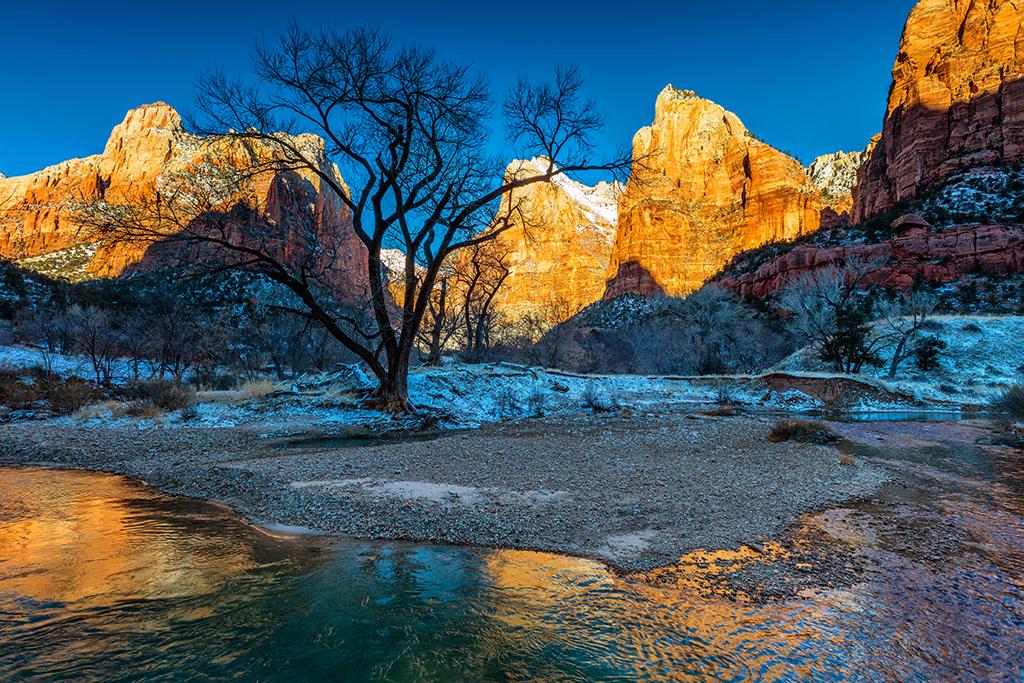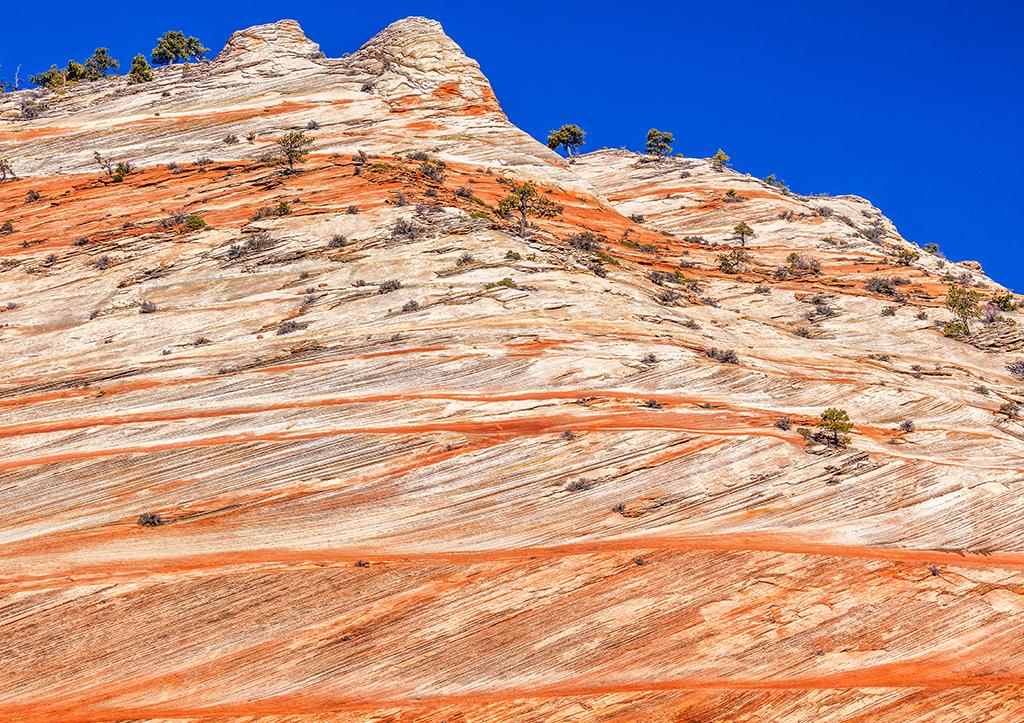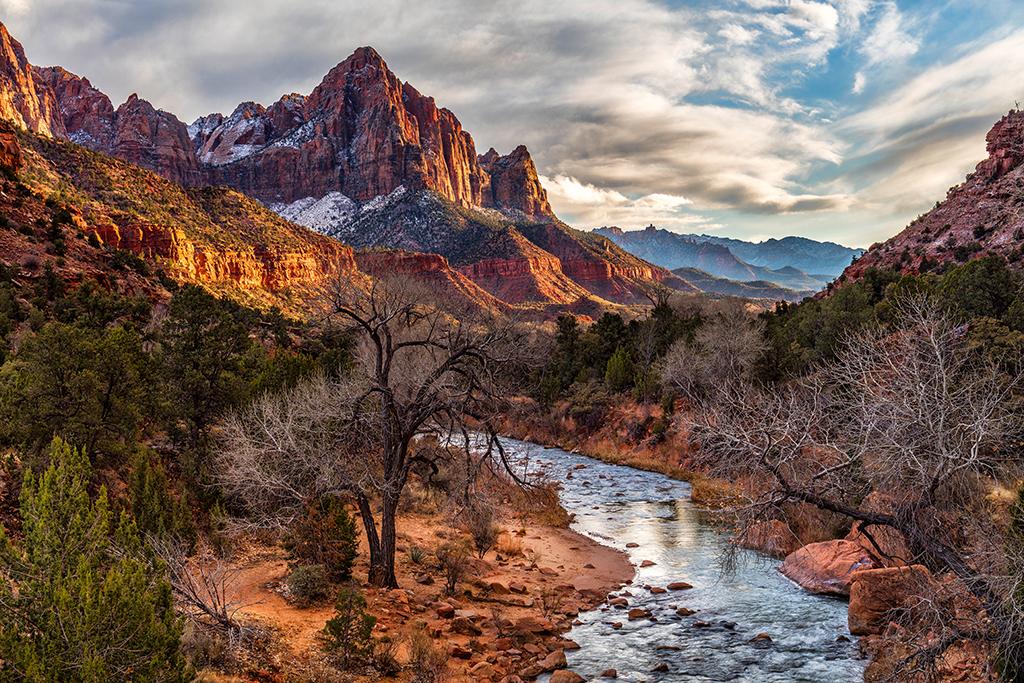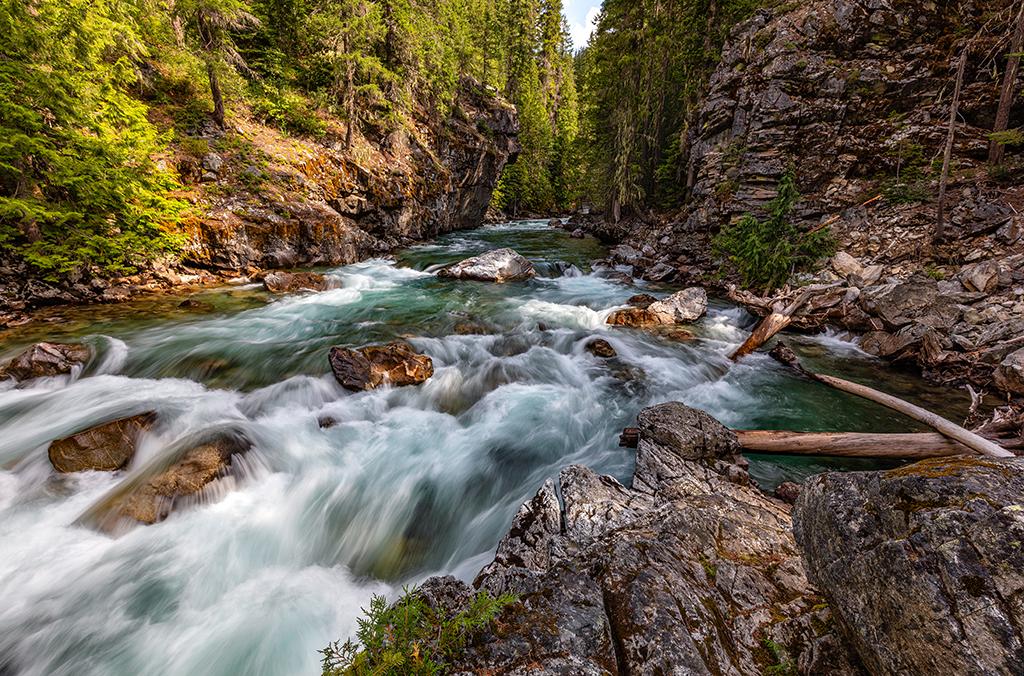
The Painted Hills on an overcast day, Painted Hills Unit, John Day Fossil Beds National Monument / Rebecca Latson
I was hoping I'd be busy snowshoeing around Crater Lake National Park by the time you read this article, but the pandemic had other plans. So, here I am, sitting in front of my laptop, finishing up this article and trying to come up with something for the Traveler’s June photography article. For this month, I thought I’d share with you more of my favorite spots for photography in the national parks and national monuments I have visited. These spots are places I’d return to, again and again, regardless of season, time of day, or weather.
John Day Fossil Beds National Monument
By now, you should have read about the 3 days I spent within this eastern Oregon geological and scenic wonder. in March, I visited all three units, and even though my visit was short, I pinpointed my favorite places for amazing photography that I would immediately revisit for more photo ops.
To me, the Painted Hills Unit is by far the most photogenic of the three units. I hiked all of the extremely short trails there, and the two places I was most impressed with in this unit were the Painted Hills Overlook, for grand views of those gorgeous, velvety red-maroon / yellow-olive green striped hills, and the top of the Carroll Rim Trail, where I captured wide-angle panoramic views of the entire unit.

Late-afternoon storm clouds and sunlight over the Painted Hills, Painted Hills Unit, John Day Fossil Beds National Monument / Rebecca Latson

A grand view from the top of the Carroll Rim Trail, Painted Hills Unit, John Day Fossil Beds National Monument / Rebecca Latson
If you are an SLR user, then for this site (and all others, really) you’d be wise to carry along a polarizing filter (CPL) and a graduated neutral density filter (grad ND). These are two filters you should always carry with you in your camera pack. For smartphone and point-and-shoot users, there are in-phone filters and photo software editing techniques that act similarly to these two filters.
CPLs work especially well when they are at an angle to the sun. By rotating the outer ring of the filter, reflections and haze dissipate and landscape colors intensify. This is a great tool to have for those colorful striped hills.
The grad ND filter is especially useful while photographing the grand vistas along the Carroll Rim Trail, because this filter mitigates overexposure of the much brighter light above the horizon while allowing for a correct exposure on the slightly darker horizon below the sky.
My next favorite place within this national monument was the Foree area of the Sheep Rock Unit. The scenery, as well as the geology, differ from the Painted Hills Unit, and viewers are greeted by different shades of green and pink soils and rock formations in this area. Because the day I visited was overcast, my CPL didn’t really help much, but the grad ND allowed me to expose for the rain-saturated dark green formations while preventing the bright, cloudy sky and snow-dusted mountain tops from “blowing out” (overexposing).

The green claystones of the Foree area, Sheep Rock Unit, John Day Fossil Beds National Monument / Rebecca Latson
Zion National Park, in Utah
Although I was unable to hike many of the more popular trails due to snowy winter weather during my February visit, I did see quite a bit of this park and found myself repeatedly returning to three places almost every morning and afternoon.
The Court of The Patriarchs was a favorite not only for photographing morning sunlight on each “patriarch,” but also reflections in the Virgin River, and various compositions emphasizing the bare-branched trees. A grad ND filter was handy because my morning shots involved bright sunlight on the tops of the canyon formations, while things remained shaded on the lower portion of the canyon and river.

A winter morning scene at Court of The Patriarchs, Zion National Park / Rebecca Latson
Other favorite photo ops occurred wherever I saw lithified cross-bedding along the Zion-Mount Carmel Highway. It felt totally mind-boggling to realize these orange-and-tan-stripped sandstone monoliths towering above me were once ancient sand dunes with loose sand grains blown great distances by the wind. I captured not only wide-angle shots, but also zoomed in close to the cross-bedding, making use of trees and bushes for a scale and reference, and applying the rule-of-thirds photo technique of placing those trees to the side of the shot.

Ancient cross-bedded sandstone dunes, Zion National Park / Rebecca Latson

Lithified sandstone cross-beds, Zion National Park / Rebecca Latson
Of course, I visited that iconic bridge view of the Watchman and Virgin River during both morning and evening. As you can see from these images, the quality and angle of sunlight created compositions ranging from soft, morning landscapes to more dramatic sunset images sharply defining each part of the scene, from rocks to water to bare trees and bushes, to canyon walls, mountains, and clouds. Because of the angle of the setting sun versus where I stood on that little bridge, the CPL reduced glare, added texture to the clouds, and created bold color saturation of the entire composition.

A soft winter sunrise over Watchman and river, Zion National Park / Rebecca Latson

Winter clouds and sunset over The Watchman, Zion National Park / Rebecca Latson
North Cascades Complex, in Washington
The entire complex, comprised of North Cascades National Park, Lake Chelan National Recreation Area, and Ross Lake National Recreation Area, is very large and I’ve only visited once, during July. That said, I know what places I’d return to during a second visit.
As a matter of fact, I *did* return to the Diablo Lake Overlook (Ross Lake National Recreation Area) three different times: once during high noon and on two separate mornings. Each photo op was created under different light and weather conditions which made each scene look a little different, didn’t it? During the mornings, a grad ND proved helpful, as the sun brightened the sky and mountain peaks while the lake and surrounding environs remained shadowed.

Diablo Lake vista at high noon, Ross Lake National Recreation Area, North Cascades Complex / Rebecca Latson

Sunrise-tipped mountain tops at the Diablo Lake Overlook, Ross Lake National Recreation Area, North Cascades Complex / Rebecca Latson

A moody morning at Diablo Lake, Ross Lake National Recreation Area, North Cascades Complex / Rebecca Latson
While spending a few days in Stehekin (Lake Chelan National Recreation Area), my favorite spot, other than the Stehekin Bakery, was on the rocks capturing the clean, clear, turquoise and white-frothed water of the Stehekin River. I’d love to return there for more images, as well as to practice my “silky water” technique of slow shutter speed and a regular ND filter (not to be confused with a grad ND filter) to achieve that satiny-soft sheen of water. A second visit would see me walking further along the trail for more angles looking down upon that rushing ribbon of water.

The Stehekin River at High Bridge, North Cascades National Park, North Cascades Complex / Rebecca Latson

The Stehekin River at High Bridge, North Cascades National Park, North Cascades Complex / Rebecca Latson
Yellowstone National Park, in Wyoming
Oh, Yellowstone. Such a large park with so many photo ops. I’ve visited twice. The first time was less than 3 days in August, but the second time was a much longer 9 days in October. During the second visit, I realized I was returning to and photographing the same spots I’d traveled to on my very short first stay. I love geology, you know, so of course I spent quite a bit of time ambling along the boardwalks of Upper Geyser Basin. My favorite photo ops within that area are Old Faithful (no duh), Morning Glory Pool, and the area around the Lion Group of geysers and nearby Castle Geyser. In these spots are a multitude of compositional wide-angle and telephoto opportunities, no matter the time of day, season, or weather. Mornings, though, as well as late evenings, still offer the best light. Chilly days allow for heavier curtains of steam to form over hot springs and during geyser eruptions. While heavier steam will often hide the colorful hot spring waters, that steam will also create a more ethereal composition. Very early mornings are best for few-to-no crowds.

Old Faithful before the sunrise, Upper Geyser Basin, Yellowstone National Park / Rebecca Latson

Lion Geyser eruption, Upper Geyser Basin, Yellowstone National Park / Rebecca Latson

The brilliant colors of Morning Glory Pool, Upper Geyser Basin, Yellowstone National Park / Rebecca Latson
I made great use of my CPL filter to remove reflections and gaze unencumbered into the colorful depths of the hot springs. I’m only sorry I never stayed up late enough for star shots while Old Faithful was erupting. The next time I visit Yellowstone, I will make certain I do just that and it’s a suggestion for you should you ever travel to this national park.
Two other places I loved photographing were in the Hayden Valley and the Lower Yellowstone Falls. Both the Lamar and Hayden valleys are beautiful, but there was something about the Hayden Valley that kept me returning to capture the unique beauty of the valley and rolling hills flanked by rugged mountains sporting layers of summer color or iced with a frosting of new snow.

Hayden Valley scenery on a moody autumn day, Yellowstone National Park / Rebecca Latson

A freezing autumn sunrise over the Lower Falls, Yellowstone National Park / Rebecca Latson
One more favorite place in Yellowstone was at Swan Lake Flats, just prior to taking that narrow, winding road down into Mammoth Hot Springs. I stopped shortly after arriving in the park that first day, and then again on the last day of my longer stay, encountering different light and weather conditions over the Gallatin Range.

A late autumn afternoon at Swan Lake Flats, Yellowstone National Park / Rebecca Latson
Maybe you’ll visit these favorite spots of mine in these parks I’ve listed. Or, maybe you already have and now you know your fave locations are mine as well. I’ve got a few more national park sites to write about in one final article. Then, it will be time for me to explore more NPS units and discover more favorite spots for photography I can share with you.



Comments
Nice article...nice work! Thank you.
What amazing, beauitful photos, thanks for sharing!
Another great article - thanks Rebecca!